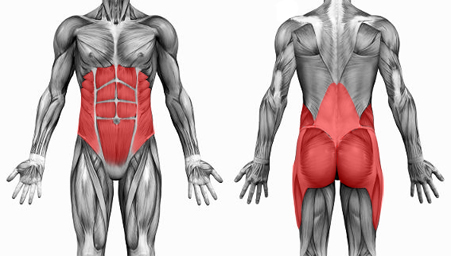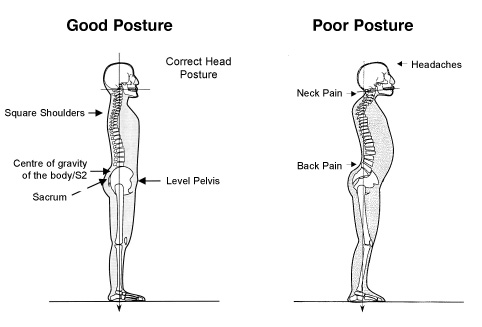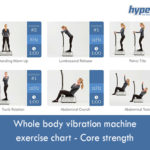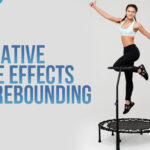
I’m sure you’ve seen them as well – those guys or ladies who hit the gym daily, do their training circuit and go home completely exhausted, but they continue to look the same and don’t feel stronger, after years of gym trainings.
These people who are so dedicated to their workouts often complain about the lack of results in terms of overall body shape and power, and you know why? Not because they don’t train hard enough, but because they train the wrong muscles!
Wait a minute, what do you mean by “wrong” muscles? It’s not like some muscles are more useful or important than others.
Correct, all your muscles are there for a reason, but some of them are responsible for maintaining your body’s posture, while others are mostly in charge with movement. And I’ll explain this immediately, so that you can understand why the type of training you’re doing is a lot more important than the speed or weight you’re using.
Skeletal muscles in the human body serve for two main functions: part of them perform movements, the others offer support.
A body that functions in a gravitational environment requires both these types of muscles to be strong and fully functional, as otherwise muscle imbalances can occur. This translates not only in an improper posture, but also in a higher risk of injuries, altered coordination of movements and impaired balance, decreased flexibility and so on.

Not training these muscles will result in a poor posture. A poor posture will look bad, regardless of how trained and ripped you are. You may have the most toned abdomen in the world, but if your posture is wrong and your stomach sticks out, you probably won’t be satisfied with your image in the mirror.
In the same way, you can have the strongest back muscles, but if you’re keeping a really poor posture and your back is either too curved in its upper area, or tilted forward or backward, your body won’t look good. Posture is sometimes even more important than the percentage of body fat and the tone of your muscles, as even an untrained body can look pretty good when posture is correct.
Look at the picture below: same body, but looks a lot better when the posture is the right one. Tonic muscles don’t get tired easily if proper posture is maintained, but misalignment of joints causes unnecessary tension in these muscles, who have to work harder to brace the misaligned joints and therefore tend to become hypertonic.
This can lead to cramps and pain, and the longer the bad posture is maintained, the more likely is for muscle imbalances to occur and for one’s body shape to be permanently affected. Tonic muscles aren’t designed to support heavy loads or to move the bones, but they do have a high level of endurance which allows them to keep your body in the proper posture even if you stand for several hours.
Training your postural muscles is so important for building a nicely shaped physique, but the problem is that so many people focus only on the movement muscles, and neglect the postural ones. And they don’t even do it on purpose: they simply don’t realize that working on machines limits the body’s natural movements. I’ll come back to this immediately, but first let me add a few words on movement muscles.
These muscles are also referred to as phasic muscles and they’re responsible for moving the body from one place to another, or the limbs from one position to another. Movement muscles get tired quicker, but they respond better to unanticipated events and stimuli, as they’re liked to the body’s reflex arcs. Also, their short-term strength is superior, so they’re able to support heavier weights.
Now let’s look at the practical part of this: when training at the gym, lots of people tend to only use the machines, and they are able to work with quite impressive resistances when doing bicep curls, leg presses and so on. However, this doesn’t mean their bodies are able to support the same weights when doing a barbell squat for example, and you know why? Because they focus on movement muscles, while their postural muscles are weak.
Take a look at this picture below. Somebody surely trained the calves a lot, but it just doesn’t look right. What’s the point in having strong calves, when your quads are weak, or your back muscles are untrained and can’t support your body properly during your daily activities?
Isolation exercises like the ones performed on machines don’t mimic natural movements, while functional fitness, which involves the use of your body weight or of free weights, focuses exactly on mimicking movements naturally performed in our daily activities.
Functional fitness puts a lot more emphasis on postural muscles and it does a great job in shaping an attractive, toned and well aligned body, while heavy lifting – when limited to machine exercises – can lead to quite unattractive results, as showed above.
So let’s get back to our initial question: are you sure you’re training the right muscles? You may not see the results you want because you focus too much on machine leg raises, bicep curls and seated overhead triceps extensions, when in fact you should be doing more exercises that involve not only your movement muscles but also the postural ones.
Instead of sitting on a bench and doing a triceps extension, try doing some triceps dips with palms on the ground. You’ll use only your body weight but you’ll also involve your legs, core and back muscles, and that’s a lot more important for someone who wants to work their entire body and build a toned figure!
The purpose of functional fitness is not to turn you into a bodybuilder, but to help you strengthen your entire body, improve your flexibility, coordination and balance, and build a well-proportioned and lean body. You won’t look like a bodybuilder, as it takes a lot of effort and a specific diet to get there!
Functional fitness is not for professional athletes and gym rats only. On the contrary, it’s the perfect choice for anyone who cares about their posture and wants to improve their overall muscle strength and tone. No age restrictions! And the best part is you don’t need weights for this type of training, as you can perform a wide range of exercises at home, using your body weight only.
Still, if you do want to make it more efficient, you can step on your whole body vibration machine and let it increase the load on your muscles, while you perform different exercises. This doesn’t limit you, as contrary to popular belief, a WBV platform isn’t suited for standing and squatting only.
You can get as creative as you want and work your upper body, core, buttocks and legs using a single machine, which does a wonderful job in strengthening your postural muscles and improving the shape and tone of your movement muscles at the same time!
If you’re already using a whole body vibration platform for training, we’d like to hear from you! Feel free to leave your comment below, or join our community on Facebook!

Updated on: 08.09.2021 The lymphatic system is involved not only...

Stress can make you gain weight – we’ve heard this...

Various theories exist to answer this question. As you will...

Our series of whole body vibration machine exercise articles continues...

Both rebounding and jumping on a trampoline are excellent ways...